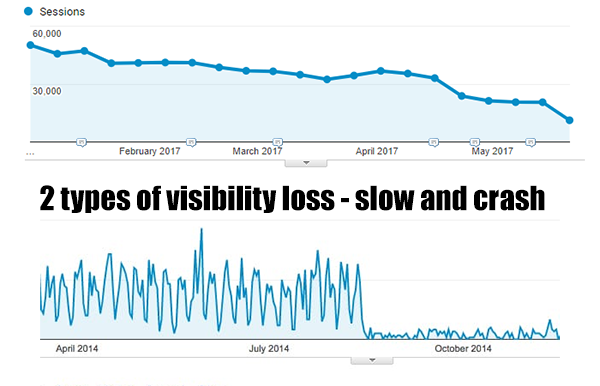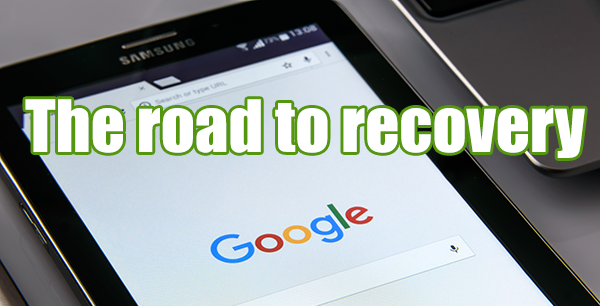SEO
What Is Forensic SEO?

One of the core areas of SEO services for me over the last 10+ years has been forensic SEO.
And hell, I drop that term all the time in various conversations, groups, interviews like it’s something that everyone knows about.
Apparently, not so much.
There does seem to be a little confusion out there on what it is exactly. And so today, we’re going to try and clear that up.
Oh, by the way, I am quite aware of the myriad of existing “definitions” of forensic SEO that currently litter the landscape.
Uhm, yeah. Sigh.
This is about how those I know that specialize in it, view forensic SEO. Feel free to argue with me about it all you want (I’m kinda used to it lol).
Forensic SEO: The Basics
To start with I’m not even sure where the term came from, but I started using it maybe 10+ years ago.
Essentially, it’s a form of (SEO) audit that isn’t about optimizing. It’s more about dealing with a site that has lost visibility.
It could be a straight-up manual action.
It could be a dampening effect (think: Penguin/Panda back in the day).
It could be on-site issues.
And many times, it’s a combination of things.
I like to teach folks/clients that it’s often about the “Sherlock Holmes School of SEO”:
“When you have eliminated the impossible, whatever remains, however improbable, must be the truth.”
As such, when we’re doing forensic SEO we really do want to cover all the bases and look into areas such as:
- Data assessment (Analytics, Search Console, etc.)
- Recent and past SEO changes to the site
- Accessing developer changelogs (changes to the site)
- Look at hosting (server) changes (updating tech, etc.)
- External factors (link building, etc.)
- Known changes to Google’s algorithms
- Market segment evolution
- Negative SEO (malicious actions by others)
- Site integrity (has it been hacked?)
And there’s always room for more. It’s somewhat situational.
But the main thing is that when one approaches lost visibility, never be myopic.
Look under every stone and never have a biased or preconceived mindset when you get started.
As I touched on above, it’s often a combination of elements. If you approach things with an existing hypothesis, you’re very likely to miss pieces of the puzzle that will gift insight into the overall issues.
The good news is that if you’re thorough and comprehensive about the process, you’ll inevitably find unrelated issues that can be turned into opportunities.

The Process
We really can’t get into the specifics of the approach. Or I’d be writing a book here, not an article.
Maybe if there’s some interest, I’ll work on something more detailed in the future (hit me up in the comments on that… thanks!). But lets at least work out some basic details.
The obvious starting point in most cases will be the client. They’ve brought you in for a given reason. That onboarding meeting makes for a good starting point.
If you’re in-house/agency, then you have a good sense of where to start as well.
If it’s a manual action? Oddly, that’s even better as you have clues and a good recourse (reinclusion request).
But again, this is just a starting point. Now we have to remove ourselves from the situation. Start to dig through the potential offenders as per the points mentioned earlier. Isolate each area and make notes.
Some important considerations include:
Data
Getting the timelines for visibility loss is a no-brainer. That being said, dig back as far as possible historically, because there may be past demons that a short temporal analysis might miss.
Knee Jerk
Often times management, in their panic, will have implemented some potential fixes. This is often done with little or no consideration of the effects.
Make sure you address these in the onboarding. It’s a separate consideration from the original problem.
Lack of Data
Like a doctor that has no patient records, you will often be faced with a lack of data.
If that’s web developer changelogs, SEO activity records (and dates), annotated analytics, etc… it’s a very common obstacle. Some of your process is going to involve instincts.
By the end of the process, you should at the very least, have some solid leads on what the issues are.
Working on Recovery
But identifying the issues isn’t where it ends. The next part is recovery.
Manual actions are reasonably straightforward. You know what the problem is, you just need to fully correct them and work on the reconsideration request.
While they’re scary and can potentially have long term effects (loss of trust, etc.), at least we have a solid starting point.
The rest? Not so much.
We’re going to have to cover as much ground as possible with the data and information at hand.
Those that are struggling financially with lost traffic often have a knee jerk reaction and start plugging away at multiple elements. That won’t work.
You have to actually implement one fix at a time and let it percolate.
This is because one “fix” might have a positive effect, while another has a negative one. As such, it would show a relative net effect of 0.
As tough as it is, we must get the client/webmaster to buy-in to the process for recovery.

Recovery Buy-in
This, much like an audit, can be the hardest part.
There’s often a ton of resistance to the recommendations which can vary from financial, convolution and even egos.
And while you can stand by your assertions and convictions, you may still run out of runway.
I would have to say that in many situations I’ve been in, the adoption of the recommendations and the metered approach isn’t fully realized. That’s the sad truth.
When doing forensic SEO work, focus on the job at hand.
Focus on the health of the site. Listen to the data and info at hand. That’s about all you can do.
Regardless of the possible push-back or the whacky client theories, just clear your mind and find the truth.
And there we have it… if you wanted to the basics of forensic SEO, you got it. Below is just a bit of insight I wanted to add to the conversation… but not mandatory reading for the piece.
On a Personal Note…
All of this brings me to the hardest part, on a personal note; The pain.
I used to do pretty much full-time forensic SEO. I had to give it up on a full-time basis. Each and every person that comes to you is suffering.
I’ve heard stories of people at risk of losing their business, their life savings, kids college fund and more. It’s not a great way to make a living (specializing in forensic SEO).
In fact, the pressure became too much and I often had poor health and sleep habits (couldn’t stop thinking about a given situation). I still work in this area, but not full time. It was just too much.
Which brings me back around to my passion for the industry. Our everyday SEO actions have repercussions. We have a responsibility that can have real-world effects.
People lose jobs and the ability to feed their family. I get very pissed off at crap-hat SEO. I go off constantly on those types in various groups (Facebook, etc.) and peeps know me for that… I don’t stand for garbage SEO.
Please… PLEASE… remember the downside of bad SEO. This is a serious business, this “thing of ours”.
As you were….












